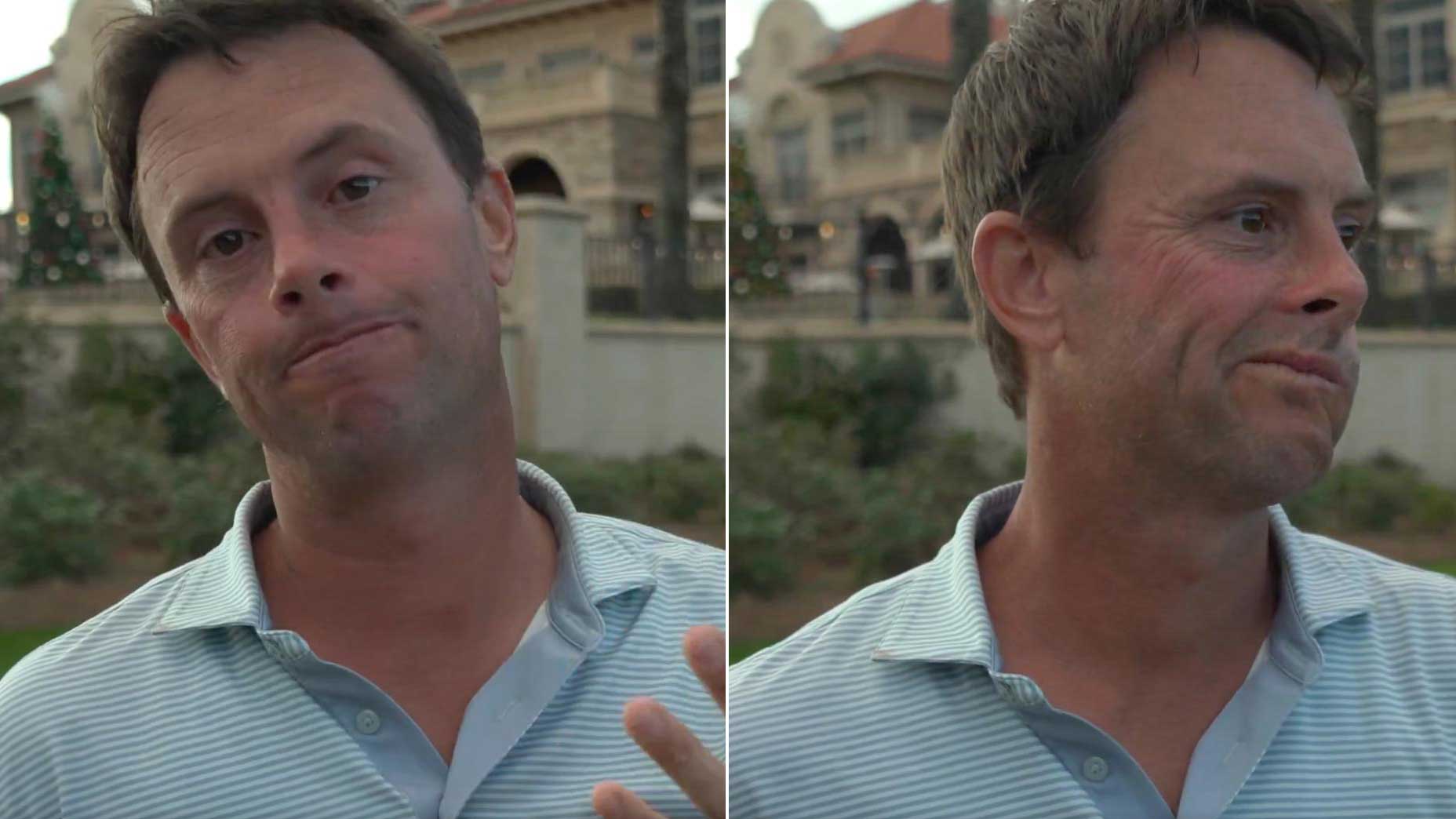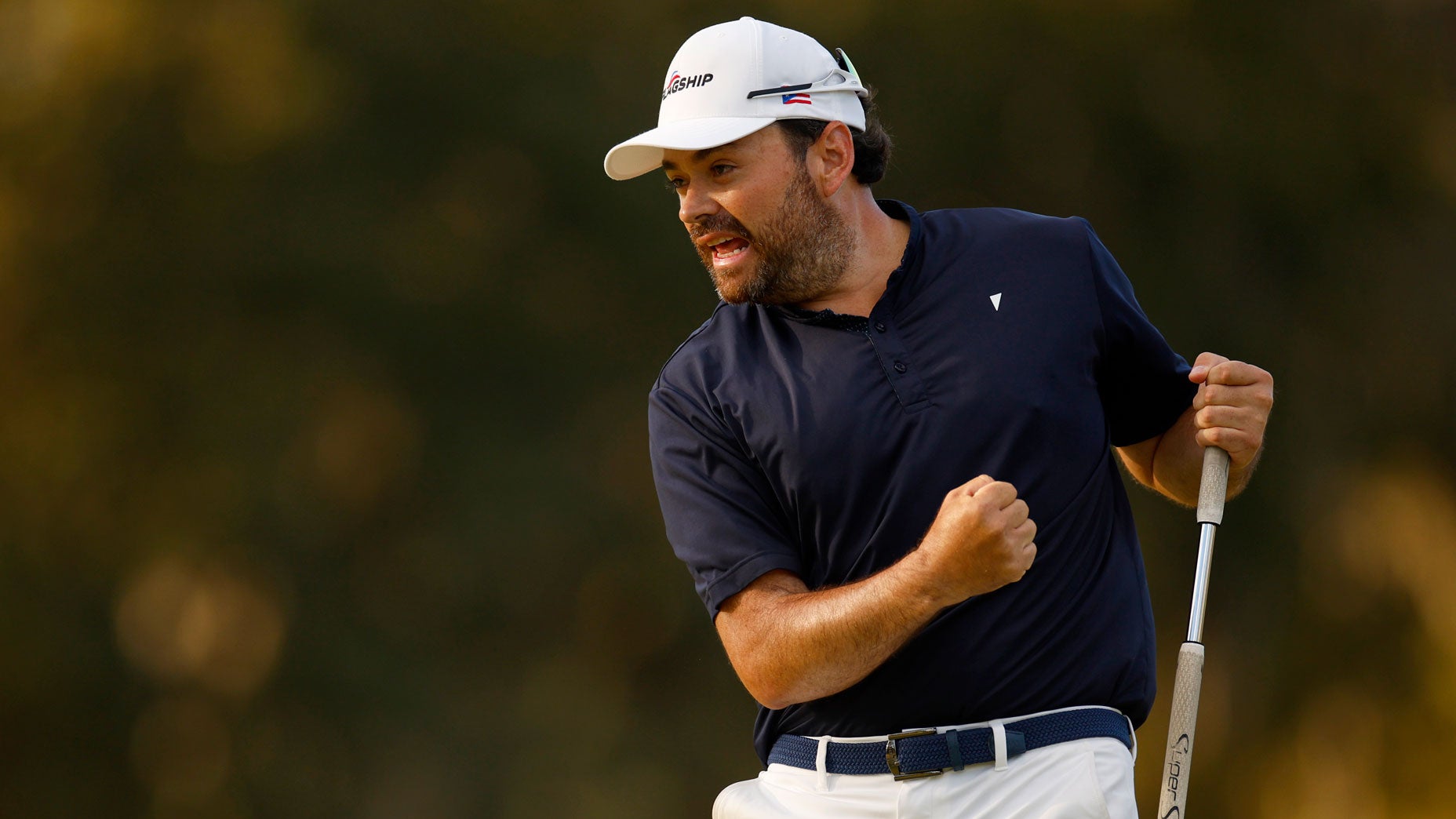 The PGA Tour offseason needs a better name. It’s not ‘silly’ anymore
The PGA Tour offseason needs a better name. It’s not ‘silly’ anymore
3 ways to build your golf swing around your physical limitations
You’ve had the same issues in your golf swing for over a decade. Every year it seems like you struggle with the same things and every time you pull out your phone and take a video, you’re not happy with what you see.
Why can’t you actually make a swing change?
It’s probably simpler than you think…sometimes, your body simply won’t allow it.
When you think about Jon Rahm there’s no doubt one of the first things that comes up is power. Most of the time we’d think if you want to be powerful you better have a lot of flexibility throughout your swing and ability to make a full backswing.
However, in his case, Rahm actually has limited flexibility on his hips. His hip turn is between just 28-34 degrees compared to the average tour pro being around 45 degrees.
Instead of trying to force his body to make a fuller hip turn and lengthen his backswing, he’s found ways around his physical limitations. Rahm focuses instead making a bigger shoulder turn and increasing his X-factor (the difference between his torso and pelvic rotation), which helps him generate elite levels of club head speed in excess of 118 miles per hour.
ne of the go-to resources for everything golf and body in the golf industry is the Titleist Performance institute, or TPI. TPI has worked with Rahm since he was a junior on the Spanish golf team, and TPI medical expert Adam Halseth explains his evolution:
“When we saw him as a teenager his limited mobility was a big reason for his short backswing. The biggest thing for us is that golf coaches don’t try to take an athlete with Jon Rahm’s mobility and put them in Adam Scott or Rory’s position at the top.”
ADVERTISEMENT

Learn From Rahm’s Limitations
Like it or not, you probably have some physical limitations you have to compensate for in your golf swing — and that’s 100 percent OK.
The goal with your swing is to create something that’s highly functional and repeatable… not necessarily beautiful to the eye. Don’t get stuck in the trap of trying to make your swing look like something you’d see on TV.
How can you compensate for physical limitations? Any number of simple set up changes. Here are a few:
1. Inflexible Hips
When I went to TPI, for instance, I found out I had limited rotation in my hips and back, so Adam Halsath flared my trail foot away from the target. That put my trail hip into more external rotation, which increased my overall hip turn on my backswing. A simple fix that counteracted one of my weakness, and helped me gain more power along the way.
2. Trail Hip Pain
If students have trail hip pain, Halseth teaches students to keep more flex in their trail leg and knee during the backswing. By having a straight knee, you lose any other rotational components of the leg and only use hip rotation.
3. Limited Shoulder Mobility
If you have trail shoulder mobility limitation, allow for a “flying elbow” on the trail side. A lot of teachers teach golfers to get the trail forearm vertical, keeping elbow in. It takes superior shoulder mobility to do this that most people don’t have and frequently causes shoulder problems. Allowing for a flying elbow allows a complete backswing.
Francesco Molinari recently began flaring his feet and lifting his lead heel in the backswing to compensate for his limited mobility, helping produce a 20 yard gain in distance off the tee.
Your physical capabilities are unique. Build a swing that suits what your body can do. pic.twitter.com/NyPJn2hvPc
— TPI (@MyTPI) October 31, 2018
If you don’t want a work around…
Of course, there’s also the main issue: That most of us work at a desk or in a seated position 40+ hours a week and head to the golf course expecting are golf swing to be in tip top shape after a few casual stretches and warm up swings.
It’s just not realistic.
First of all we need to improve our stretching and warm up. Simple as that get an effective warm up that targets your limitations and get’s you ready to play golf.
A 2008 study found that golfers that did not perform an appropriate arm up were 3.2 times more likely to get an injury than those that do.
Next would be helping our bodies gain strength and mobility to improve these limitations that come up during screening. The best way to do this is to find a TPI certified fitness professional who can create a program for you to work through.
ADVERTISEMENT




